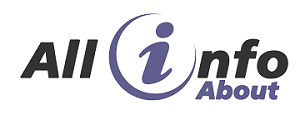In today’s globalized job market, the ability to communicate in multiple languages is highly sought after by employers. Showcasing your language proficiency effectively on your resume can significantly enhance your chances of landing a job. Whether you are fluent in Spanish, competent in French, or an expert in Mandarin, articulating these skills correctly can make your resume stand out among numerous job postings and sample resumes.
The skills section: The perfect place to highlight language abilities
When creating or refining a resume, especially with tools like a free cv maker, evaluating where to place your language skills is key. The skills section is often the best area to feature these qualifications since it allows potential employers to quickly assess your capabilities.
Creating a dedicated language skills section
If you are proficient in more than one language, consider dedicating a specific subsection within your skills section to list them. Here’s how to do it:
- Create a header titled “Language Skills” or “Languages”.
- List each language followed by your proficiency level (e.g., English – ILR Level 4, Spanish – CEFR C1).
- Avoid vague terms like “basic,” “intermediate,” and “fluent.” Use standardized self-rating scales such as ILR, CEFR, or ACTFL tests for more specificity.
Understanding and using standardized language proficiency scales
Employers may not always know what “proficient” means to you. Standardized scales offer a common ground, making it easier for hiring managers to understand your true capabilities.
The ILR scale
The Interagency Language Roundtable (ILR) scale ranges from 0 (No proficiency) to 5 (Native proficiency). It’s widely used in U.S. federal job postings and evaluations:
- No proficiency – Little to no communicative ability.
- Elementary proficiency – Able to handle basic communication needs.
- Professional working proficiency – Capable of satisfying most work requirements with some ease.
- Full professional proficiency – Can handle a wide range of tasks with accuracy and fluency.
- Native or bilingual proficiency – Equivalent to that of an educated native speaker.
The CEFR C2 qualification and other levels
The Common European Framework of Reference for Languages (CEFR) is particularly popular in Europe and consists of six levels:
- A1 (Beginner) – Basic interaction skills.
- A2 (Elementary) – Ability to communicate in simple, everyday situations.
- B1 (Intermediate) – Independent speaker with confidence in familiar contexts.
- B2 (Upper-intermediate) – Good command of the language but occasional misunderstandings in complex settings.
- C1 (Advanced) – Accurate use of language with good skillfulness across various scenarios.
- C2 (Proficient) – Almost mastering the language as a native speaker would.
The ACTFL tests
The American Council on the Teaching of Foreign Languages (ACTFL) provides another method to describe language ability. It offers categories such as:
- Novice – Minimal practical communication; divided into Low, Mid, High.
- Intermediate – Able to create conversation on familiar topics; divided into Low, Mid, High.
- Advanced – Advanced ability in past, present, and future tense conversations; divided into Low, Mid, High.
- Superior – Proficiency at a high level akin to that needed in diverse, complex discussions.
- Distinguished – Very rare, akin to academia excellence in language understanding and usage.
Incorporating language proficiency indirectly
Beyond the skills section, mentioning language proficiency in other areas of your resume can reinforce your linguistic strengths.
Core resume sections: Professional experience
Incorporating how you utilized language skills in previous roles can solidify your credentials:
- Include bullet points describing language-specific tasks (e.g., “Translated business documents from English to Japanese”).
- Mention client interactions handled in different languages (e.g., “Managed customer service inquiries in both Spanish and English”).
- Highlight achievements enabled by your language skills (e.g., “Negotiated contracts with German-speaking vendors”).
Education and certifications
If you’ve taken formal language courses or obtained certifications, list them in the education section:
- “Bachelor’s in International Relations with minor in Spanish”
- “Certified Translator – French-to-English from X Institute”
- “Goethe-Zertifikat C1 – German”, paired with CEFR C1 Qualification
Including language skills in the resume summary or objective
Your resume summary or objective statement sets the tone for the reader. It’s an excellent area to immediately highlight your multilingual assets.
Examples:
“Multilingual marketing specialist with fluency in English, French (CEFR B2), and Mandarin (ILR Level 3), seeking to leverage linguistic skills in a dynamic international firm.”
“Objective: To secure a project management role where my trilingual abilities (Spanish ILR Level 4, Italian CEFR C1, and Japanese ILR Level 2) will contribute to cross-border team efficiency.”
Self-assessment and selecting the right language rating system
Choosing between ILR, CEFR, and ACTFL can depend on your location, industry, and audience. Self-assessment should be done honestly and might involve reviewing course materials, practice exams, or obtaining professional evaluations. Here’s how you can choose a suitable system based on context:
- US-based positions – Prefer using the ILR scale for governmental and defense sector roles due to its familiarity in these industries.
- International roles – Rely on CEFR classification for positions in Europe or global companies due to its broad acceptance.
- Academic or teaching roles – Utilize ACTFL categories as they are well-regarded in educational institutions and learning programs worldwide.
Ultimately, precise articulation of language skills using recognized scales resonates well with hiring managers and aligns expectations accurately. Finding applicable examples in sample resumes can also serve as guidance for structuring the language proficiency segment correctly.
Showcase language proficiency creatively
While sections like skills, professional experience, and education provide conventional spaces, don’t shy away from incorporating language skills in innovative ways if fitting:
Personal projects and volunteering
If involved in any language-utilizing personal projects or volunteer work, add them under related headings such as “Volunteer Experience”:
- “Volunteered as an interpreter for refugees, translating between Arabic and English”.
- “Conducted online Spanish tutoring sessions for non-native speakers.”
- “Blogged extensively about French culinary practices in both French and English”.
Tailoring your approach for different job postings
Every job posting has unique demands. Tweaking your presentation based on the job requirements can make a significant difference:
- Technical roles: Might need technical terminology proficiency alongside conversational fluency.
- Customer-oriented roles: Emphasize interaction capabilities and cultural understanding.
- Executive positions: Implicate strategic use of language skills in negotiations, presentations, and leadership.
Analyze keywords and tailor your documented proficiencies accordingly to reflect the most alignment with the job criterion mentioned in job postings.
Displaying language proficiency prominently enhances your resume’s attractiveness, promising employers additional value alongside your core competencies. Using thorough, accurate descriptions and reliable scales creates a transparent picture, ensuring both parties share aligned expectations regarding language capabilities. Consider not only listing these skills but weaving them throughout your resume’s fabric to underscore their importance continually.





